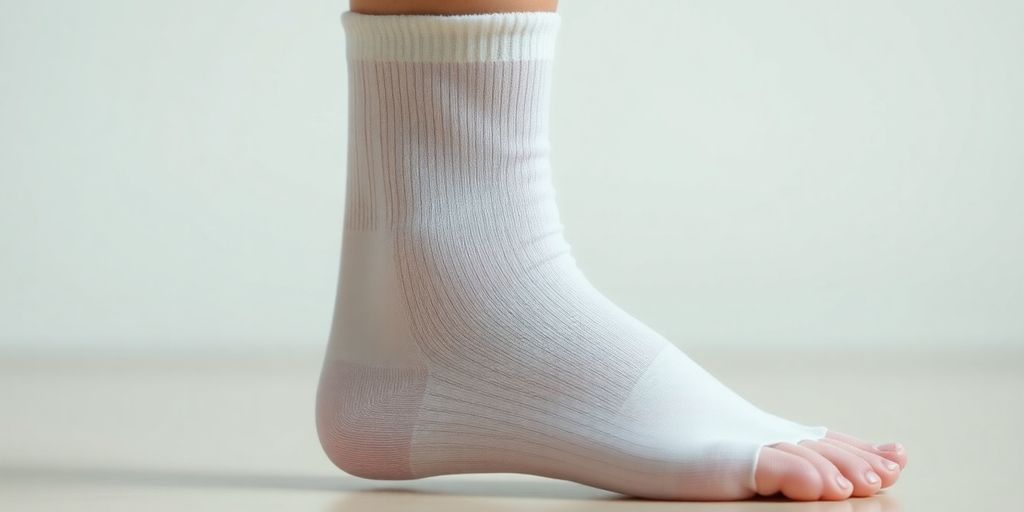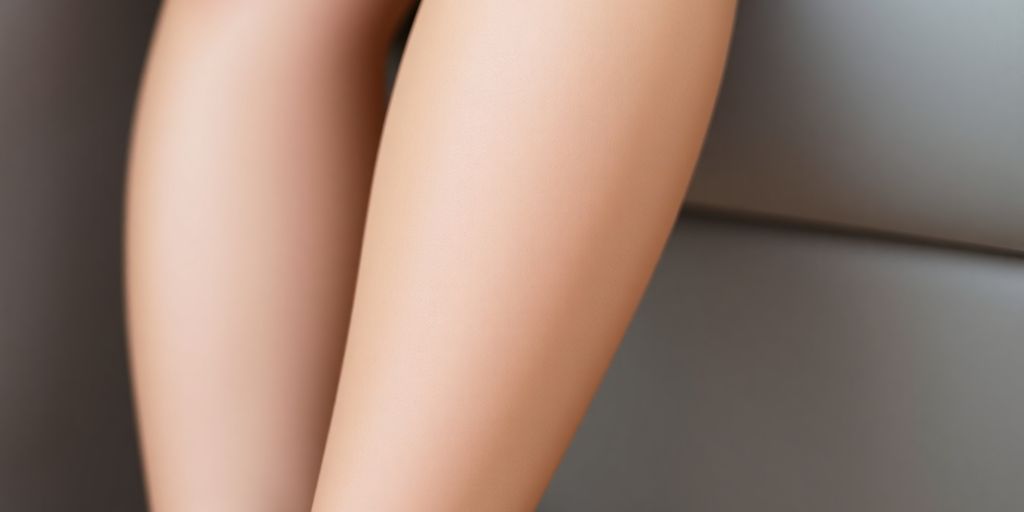Lymphedema is a chronic medical condition characterized by the accumulation of lymphatic fluid in body tissues, typically affecting the arms or legs. This swelling occurs when the lymphatic system experiences dysfunction or damage, preventing proper drainage of lymph fluid throughout the body.
Table of Contents
- What is Lymphedema?
- The Role of Compression Therapy
- Types of Compression Treatment
- Benefits of Compression Garments
- Choosing the Right Compression
- Comprehensive Lymphedema Management
- Frequently Asked Questions
What is Lymphedema?
Understanding the Lymphatic System
The lymphatic system functions as the body's drainage network, consisting of vessels, nodes, and organs that transport lymph fluid throughout the body. This colorless fluid contains white blood cells, proteins, and cellular waste products. When the lymphatic system becomes compromised, lymph fluid accumulates in tissues, resulting in the swelling characteristic of lymphedema.
Primary vs. Secondary Lymphedema
Medical professionals classify lymphedema into two main categories:
Primary Lymphedema: Develops due to congenital abnormalities or inherited conditions affecting the lymphatic system structure or function.
Secondary Lymphedema: The more common form, occurring as a result of damage to or removal of lymph nodes and vessels. Common causes include:
- Cancer treatments (surgery, radiation therapy)
- Chronic venous insufficiency
- Physical trauma or injury
- Infections affecting the lymphatic system
- Obesity
Risk Factors and Symptoms
Healthcare providers identify several risk factors that may increase lymphedema likelihood. Symptoms typically include progressive swelling, feelings of heaviness or tightness, reduced range of motion, and skin texture changes in affected areas.
Important: Always consult with a qualified healthcare professional for proper diagnosis and treatment planning. Self-diagnosis can lead to inappropriate treatment and potential complications.
The Role of Compression Therapy
How Compression Garments Function
Compression therapy applies graduated external pressure to affected limbs, supporting the lymphatic system's natural drainage process. This mechanical assistance works through several mechanisms:
- Pressure gradient creation: Higher pressure at the extremity decreasing toward the trunk
- Enhanced muscle pump function: Supporting muscle contractions that propel lymph fluid
- Reduced capillary filtration: Limiting additional fluid accumulation in tissues
Compression Pressure Classifications
| Compression Level | Pressure Range (mmHg) | Typical Applications |
|---|---|---|
| Light | 15-20 | Mild swelling, prevention |
| Moderate | 20-30 | Moderate lymphedema |
| Firm | 30-40 | Moderate to severe lymphedema |
| Extra Firm | 40-50+ | Severe lymphedema (medical supervision required) |
Types of Compression Treatment
Medical-Grade Compression Garments
Healthcare providers commonly recommend several types of compression garments:
Compression Stockings and Sleeves: Custom-fitted garments designed for daily wear, available in various compression levels and styles.
Multi-Layer Bandaging Systems: Specialized wrapping techniques using multiple layers of bandages to achieve therapeutic compression levels.
Pneumatic Compression Devices: Mechanical devices that use sequential inflation and deflation to simulate natural lymphatic drainage patterns.
Professional Fitting Requirements
Proper garment fitting requires professional measurement and assessment. Certified lymphedema therapists or trained medical professionals should:
- Conduct comprehensive limb measurements
- Assess skin condition and sensitivity
- Determine appropriate compression levels
- Provide education on proper application and care
Benefits of Compression Garments
Symptom Management
Clinical studies and medical literature document several potential benefits of compression therapy for lymphedema management:
Fluid Reduction: External pressure assists lymphatic drainage, potentially reducing fluid accumulation in affected tissues.
Symptom Relief: Many patients report decreased feelings of heaviness, tightness, and discomfort when using appropriate compression therapy.
Functional Improvement: Reduced swelling may contribute to improved mobility and range of motion in affected limbs.
Preventive Care
Consistent compression use may help prevent certain complications associated with lymphedema progression:
- Reduced risk of cellulitis and other skin infections
- Prevention of tissue fibrosis (hardening)
- Maintenance of skin integrity
- Support for overall limb health
Medical Disclaimer: Individual results vary, and compression therapy effectiveness depends on multiple factors including condition severity, proper fitting, and consistent use.
Choosing the Right Compression
Professional Consultation Process
Selecting appropriate compression therapy requires medical evaluation and professional guidance. Healthcare providers typically assess:
Medical History: Complete review of underlying conditions, treatments, and symptom progression.
Physical Examination: Assessment of affected areas, skin condition, and circulation status.
Measurements and Fitting: Precise limb measurements for proper garment sizing and compression level determination.
Lifestyle Considerations: Daily activities, mobility needs, and patient preferences affecting treatment selection.
Contraindications and Precautions
Certain medical conditions may contraindicate compression therapy use:
- Severe peripheral arterial disease
- Acute infections or open wounds
- Severe cardiac conditions
- Certain skin conditions
Healthcare providers evaluate individual risk factors before recommending compression therapy.
Comprehensive Lymphedema Management
Multi-Modal Treatment Approach
Effective lymphedema management typically involves multiple treatment modalities:
Complete Decongestive Therapy (CDT): A comprehensive approach combining manual lymphatic drainage, compression therapy, exercise, and skin care.
Manual Lymphatic Drainage: Specialized massage techniques performed by trained therapists to stimulate lymphatic flow.
Exercise Programs: Structured physical activities designed to support lymphatic drainage and maintain mobility.
Skin Care Protocols: Preventive measures to maintain skin health and prevent infections.
Patient Education and Self-Management
Healthcare providers emphasize the importance of patient education for successful long-term management. Key elements include:
- Proper garment application and removal techniques
- Daily skin inspection and hygiene practices
- Recognition of infection signs and symptoms
- Activity modification strategies
- Long-term maintenance planning
Frequently Asked Questions
What is lymphedema?
Lymphedema is a chronic condition involving lymphatic fluid accumulation in body tissues, causing swelling typically in arms or legs. It occurs when the lymphatic system cannot adequately drain fluid from affected areas.
How do compression garments work?
Compression garments apply graduated external pressure to support the lymphatic system's natural drainage function. This pressure helps move accumulated fluid and may reduce further fluid buildup.
What types of compression therapy are available?
Common options include medical-grade compression stockings and sleeves, multi-layer bandaging systems, and pneumatic compression devices. Healthcare providers determine the most appropriate type based on individual assessment.
Who should fit compression garments?
Certified lymphedema therapists, trained medical professionals, or specialized fitting specialists should measure and fit compression garments to ensure proper sizing and compression levels.
Can compression therapy cure lymphedema?
Lymphedema is typically a chronic condition requiring ongoing management. While compression therapy may help manage symptoms and support lymphatic function, it is generally part of a comprehensive treatment approach rather than a cure.
Are there risks associated with compression therapy?
When properly fitted and used under medical supervision, compression therapy is generally considered safe. However, incorrect use or inappropriate compression levels may cause complications. Always follow healthcare provider recommendations.
How long should compression garments be worn?
Wearing schedules vary based on individual needs and medical recommendations. Most healthcare providers recommend daytime use, with specific instructions for duration and frequency based on condition severity and treatment goals.
What other treatments complement compression therapy?
Lymphedema management often includes manual lymphatic drainage, structured exercise programs, skin care protocols, and patient education. Healthcare providers develop individualized treatment plans combining multiple approaches.
Medical Disclaimer: This information is for educational purposes only and does not constitute medical advice. Always consult with qualified healthcare professionals for diagnosis, treatment recommendations, and ongoing medical care. Individual experiences and treatment outcomes may vary.




Share:
Compression Socks For Hiking
Support your body in the summer